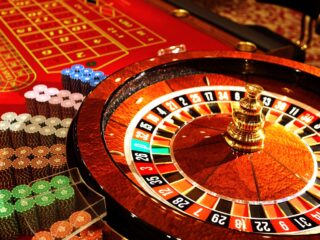
Artificial turf is a popular choice for landscaping, sports fields, and other outdoor areas. It provides a lush green appearance without the maintenance and water requirements of natural grass.
But, not all artificial turf is created equal. There are different types of synthetic materials used to create artificial turf. Each has its unique characteristics and benefits.
Here, we will explore the different types of artificial turf synthetic materials in more detail.
Polyethylene Turf
Polyethylene is one of the most used materials in artificial turf, particularly for sod installation. It is known for its soft texture and natural appearance. This makes it ideal for landscaping and residential lawns.
PE fibers are durable and resistant to UV radiation. This ensures that the turf maintains its color and integrity over time. This material is also flexible, which allows for better resilience and performance in sports fields.
Polypropylene Turf
Polypropylene (PP) is another popular material used for artificial turf. It is like polyethylene but has a lower price point, making it an affordable option for large areas.
But, PP fibers are not as durable as PE and can break down over time with heavy foot traffic. They are also prone to melting under high temperatures. This makes them less suitable for hot climates.
PP turf is best suited for use in low-traffic areas. This includes decorative lawns or rooftops.
Nylon Turf
Nylon is the most durable synthetic material used in artificial turf. It is often used in high-traffic sports fields and playgrounds due to its strength and abrasion resistance.
One of the main benefits of nylon turf is its resilience. It can bounce back after being compressed.

This makes it ideal for sports that involve high impact and foot traffic.
But, nylon turf can be stiff and less natural-looking compared to polyethylene or polypropylene. It is also the most expensive option among the three.
Hybrid Turf
Hybrid turf combines different synthetic materials to create a more versatile and durable artificial grass. For example, a combination of PE and PP fibers can result in a turf that has the durability of nylon but with better flexibility and natural appearance.
Hybrid turf is used in professional sports fields, where high performance and aesthetics are crucial. It is also suitable for residential lawns or commercial areas that experience heavy foot traffic.
Recycled Materials
Some artificial turf synthetic manufacturers are now using recycled materials, such as old tires or plastic bottles, to create more environmentally friendly options. These materials are often combined with polyethylene or polypropylene fibers to create a durable and sustainable turf.
Recycled artificial turf is an excellent choice for those looking for an eco-friendly alternative without sacrificing quality and performance. It is also a great way to reduce waste and promote sustainability.
Choose the Right Artificial Turf Synthetic Material
Artificial turf has come a long way since its early days of being made from nylon. With advancements in technology, there are now various synthetic materials used to create high-quality and durable turfs for different purposes.
When considering artificial turf synthetic material, it is essential to understand the differences between these materials and choose the one that best suits your needs and budget. So, explore your options and choose the perfect synthetic material for your artificial turf installation! Happy gardening!
Is this article helpful? Keep reading our blog for more.






